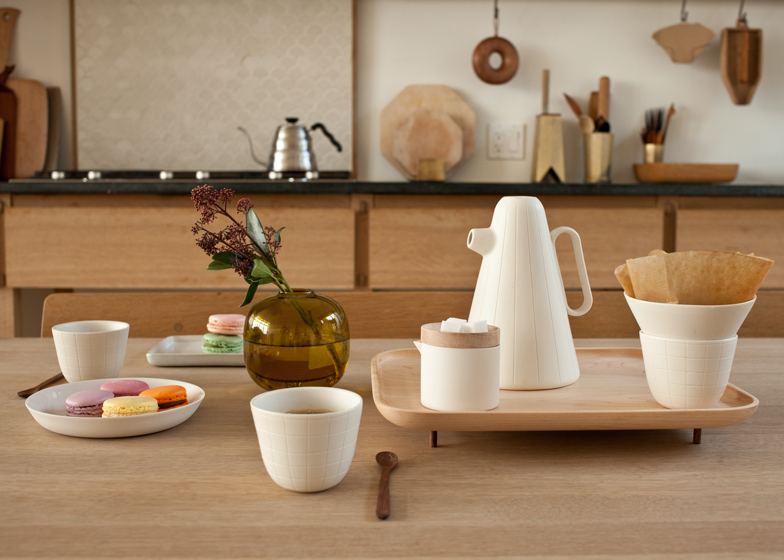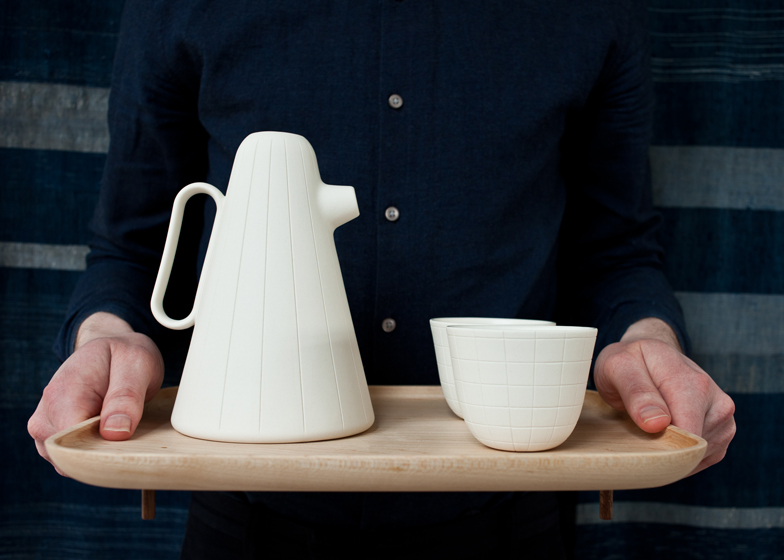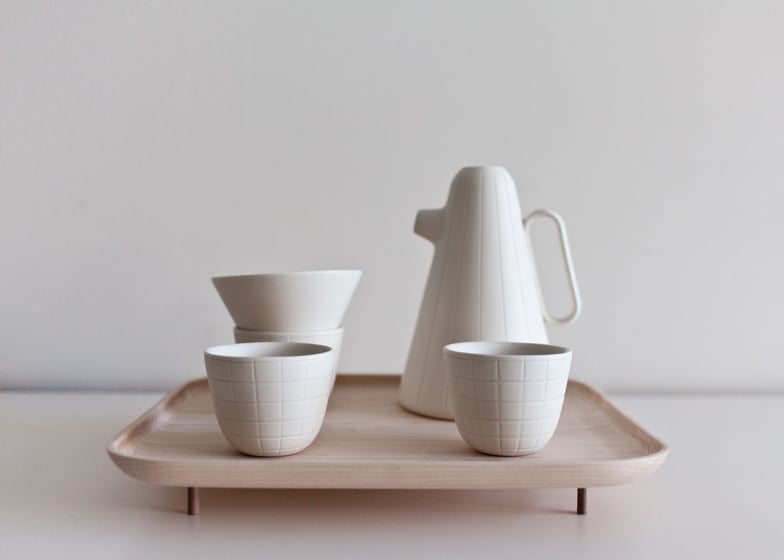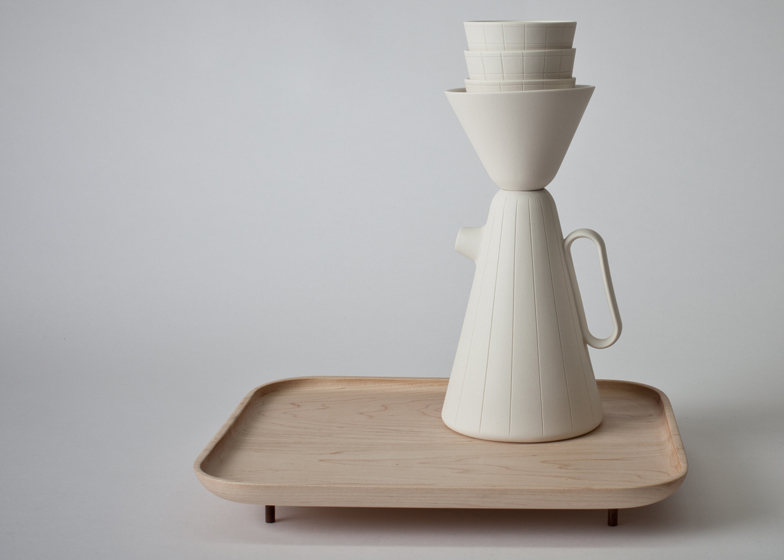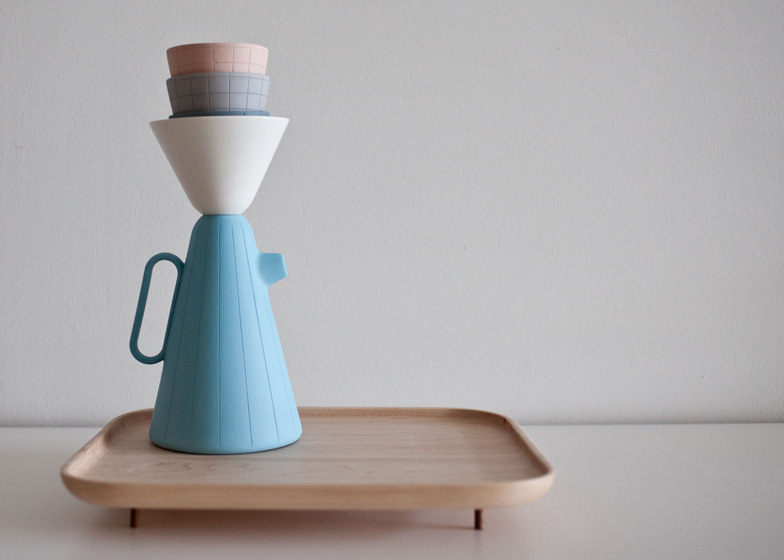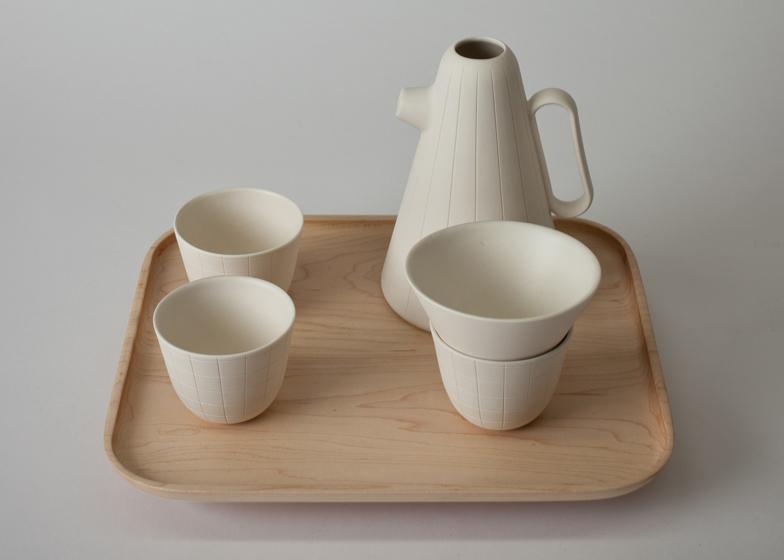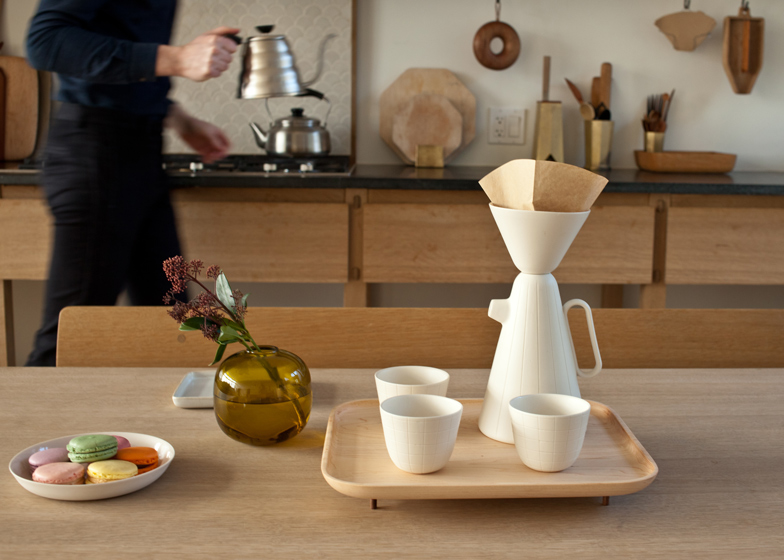Stockholm 2014: Italian designer Luca Nichetto has designed a ceramic coffee set to accompany a solo exhibition of his work at Mjölk gallery in Toronto (+ slideshow).
Called Sucabaruca and exhibited at this year's Stockholm Furniture Fair, the set includes three cups, a pot, filter and a tray made from Canadian maple wood.
Luca Nichetto decided to make a product for Mjölk after meeting owners John Baker and his wife Juli Daousti in September 2013.
"I immediately came up with the idea of designing a coffee set that aims to combine the modern ritual of filtered coffee, which unites several countries including North America and Scandinavia," the designer said.
The cups and pot are both hand engraved. They come in four shades - white, grey, blue and pink - and all the materials used to make them were locally sourced.
The Mjölk gallery features furniture and lighting from across Japan and Scandinavia, so Nichetto said he designed Sucabaruca to fit with the gallery's style.
The prototypes for the coffee set were made by Canadian ceramist Alissa Coe, while Russian designer Lera Moiseeva helped develop the set in collaboration with Nichetto's studios in Sweden and Italy.
Referring to this mix of nationalities, Nichetto said the project was "an extraordinary melting pot of ideas and energy on an international scale".
Here's a project description from the design team:
Luca Nichetto + Mjölk Sucabaruca Gaston wine bar, Mälartorget 15 Stockholm
After the success during the Toronto Design Offsite where the coffee set Sucabaruca won the awards for Juror's Choice and Best Exhibition during the festival, it will be presented for the first time in Europe at the Stockholm Design Week 2014 during a unique event at Gaston wine bar located in Mälartorget 15 in the heart of the Swedish capital.
The collaboration between Luca Nichetto and the Mjölk gallery started during the first visit of the Venetian designer in Canada, where, taking the suggestion of his friend Eero Koivisto he visited the Mjölk gallery, where he met with the gallerists John Baker and his wife Juli Daoust.
The warm and elegant environment, fitted out with finely crafted objects from all over Japan and Scandinavia, put Nichetto immediately at ease. During pleasant conversations with John and Juli, their common passion for design and detail have led them to think of a collaboration, which resulted in a product specifically designed for their gallery, along with a solo exhibition containing some of the projects, the designer, has created in his career.
The product created for Mjölk is the coffee set called "Sucabaruca". It is a project that, from the start, has been involving people from different cultures and countries: Juli and John who, with passion, collect and distribute in Canada products mainly from Scandinavia and Japan; the Canadian ceramist Alissa Coe, who made the prototypes, skillfully interpreting our project; Lera Moiseeva, designer and artist of Russian origin, but New Yorker by adoption, who contributed to the development of the coffee set in collaboration with Nichetto ́s studios in Sweden and Italy. All these people have enriched the project, making it an extraordinary melting pot of ideas and energy on an international scale.
The "Sucabaruca" coffee set, designed by Luca Nichetto in collaboration with Lera Moiseeva, is rich in cultural and formal references that come from the influences of several people involved in the project. The main cone- shaped body is reminiscent of "Carmencita", the famous character created by Armando Testa in 1966 for the tv show "Carosello". The patterns, hand-engraved by hand in the ceramic, are meant to emphasize the uniqueness of the pieces, as well as for the tray, manufactured using material such as Canadian maple wood, which always reveal new and unique patterns when carved. Just like in a game, the set elements can be stacked and combined as desired, indulging in the different personalities offered by 3 colour palettes, from total white, inspired by the fashion designer Martin Margiela, to pastel tones, characteristic of Japanese architectures, and eventually pop colours, a tribute to the eclectic artist Jean-Paul Goude.

